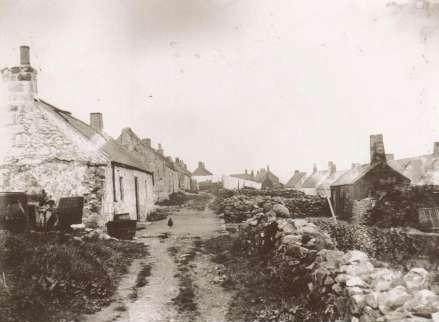
Local Land & Soil |
 So what were the main challenges in respect to developing
the Portlethen area as a proper farming and agricultural area?
So what were the main challenges in respect to developing
the Portlethen area as a proper farming and agricultural area?
Probably the main drawback was the quality of the land itself. The mossy and boggy nature of much of the land around the Portlethen area didn’t lend itself well towards cultivation and crop growing so many acres within the estate of Portlethen would have been looked at as waste land.
There were strips of fertile land along the coastal margin of the sea, particularly through the lands of Muchalls, Skateraw, Portlethen, Findon and beyond to Nigg. However, even within these fertile stretches cultivation would prove to be challenging because much of this good quality soil was interspersed with large quantities of decomposed granite and gneiss. In other words the land was quite stony.
In respect to the fertile lands around Portlethen an Agricultural Survey from 1810 stated as follows;
“The soil there, in whatever state it might have originally been, has long since become a most fertile loam, a never failing effect of continued cultivation, conjoined with a copious application of enriching manures. The only circumstance by which land of this nature can be distinguished, must arise from the original prevailing quality, as clay, sand, &c. Here it may be called a loam derived from granite; a distinction more prevalent in this part of the country than any other, as granite is the most general original substance”.
So it would appear that with continual cultivation and the application of good manure over many years the fertile lands of Portlethen were beginning to reach their prime by 1810.
However with so much of the surrounding lands being of a mossy nature was there anything that could be done to reclaim those areas for farming purposes and make them arable? Remarkably it would appear that in those early years the answer was yes.
The answer to reclaiming the mosses lay in draining small parcels of land, laying down lime and then building substantial drystane dykes around the enclosures. This was practised by landowner George Auldjo of Portlethen at the end of the 18th century and Dr William Nicol, landowner of Findon later developed this strategy further by draining, cutting out peat, leaving a depth of around twelve inches of the peat base and then laying down lime to convert the soil so that it was suitable for the production of vegetables.
Where there’s a will there’s a way, and these early hands-on landowners were willing to experiment to maximise the potential of the lands that they owned.